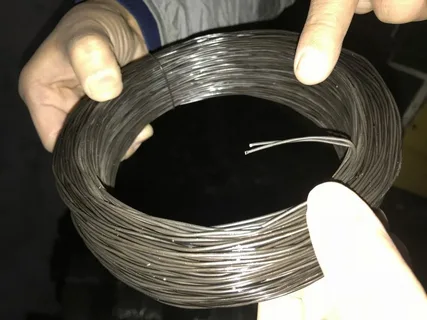Tie wire is an essential material used in construction, gardening, and various DIY projects. However, it is prone to rust if not stored correctly. Rust can significantly reduce the strength and usability of the wire, leading to safety concerns and material waste. This article will guide you through the best practices on how to store tie wire properly to prevent rust and extend its lifespan.
Understanding Tie Wire and Its Vulnerability to Rust
Tie wire is typically made from steel, which is highly susceptible to rust when exposed to moisture and air. While galvanized or coated tie wires offer some resistance, proper storage is still crucial. Rust not only weakens the wire but also makes it harder to work with, especially in precise construction tasks.
Key Tips on How to Store Tie Wire Properly to Prevent Rust
1. Store in a Dry Environment
The most important step in how to store tie wire properly to prevent rust is to keep it in a dry, well-ventilated area. Moisture is the primary cause of rust, so avoid storing tie wire outdoors or in damp basements.
- Use sealed containers or storage bins with lids.
- Consider using silica gel packs or moisture absorbers inside the containers.
- Keep the storage area temperature-stable to avoid condensation.
2. Use Protective Coverings
If tie wire must be stored in a less-than-ideal environment, cover it with plastic wrap or waterproof tarps. This extra layer of protection helps minimize contact with moisture and humidity.
3. Elevate From the Ground
Avoid placing tie wire directly on concrete or bare ground, as these surfaces can retain moisture and accelerate corrosion. Use wooden pallets, shelves, or racks to keep the wire off the floor.
4. Apply Anti-Rust Coating
For long-term storage, consider applying a light coat of oil or commercial anti-rust spray on the wire. This adds a protective barrier against oxidation.
Regular Inspection and Maintenance
Even with the best precautions, it’s wise to regularly inspect stored tie wire for signs of rust. Remove any rust spots with a wire brush and reapply protective coating if necessary. Rotation of old stock ensures that older wire gets used before newer stock begins to degrade.
Conclusion
Knowing how to store tie wire properly to prevent rust can save time, money, and effort in the long run. By keeping the wire dry, covered, and off the ground—and with periodic maintenance—you can ensure your tie wire remains strong and usable for any project. Follow these best practices and make rust a thing of the past.


